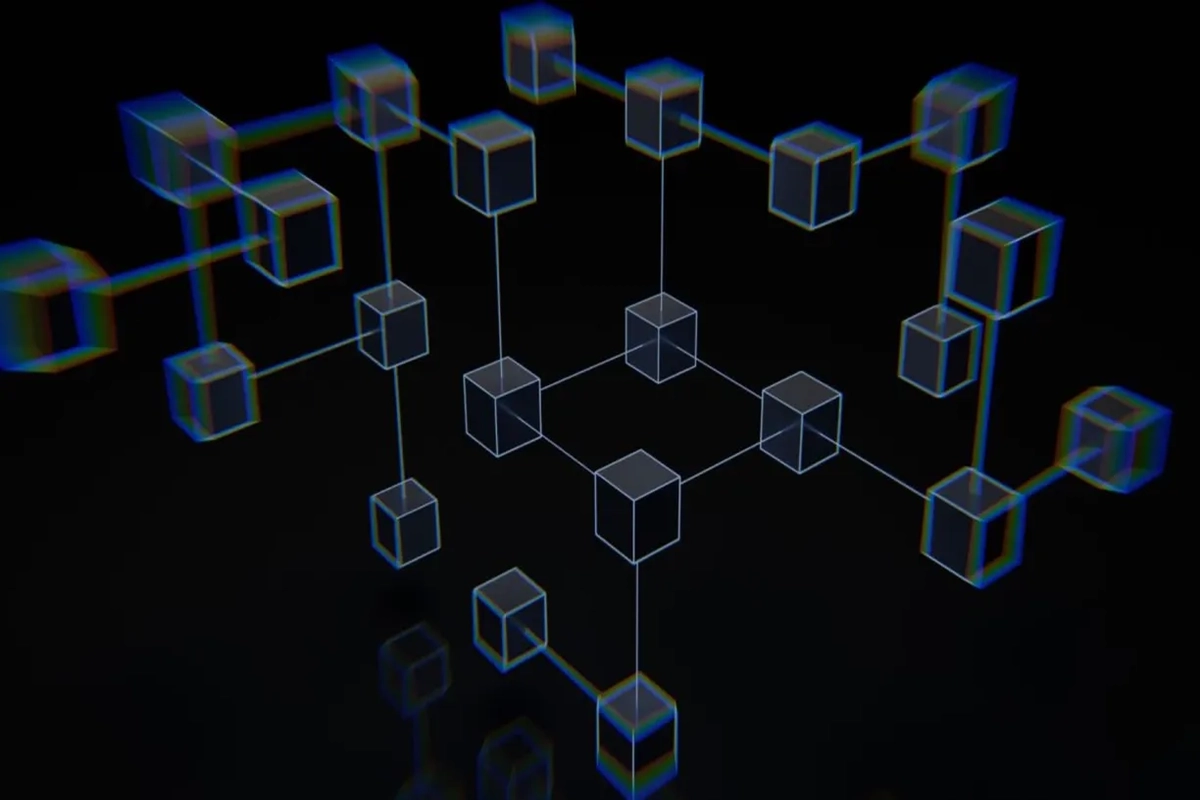
Understanding Blockchain Technology
Understanding Blockchain Technology: The Foundation of Digital Innovation
Blockchain technology has become a cornerstone in the world of digital currencies and beyond, offering unprecedented security, transparency, and efficiency. As the foundation of cryptocurrencies, blockchain has the potential to revolutionize various industries, including finance, healthcare, supply chain, and more. This blog delves deep into the intricacies of blockchain technology, its applications, advantages, challenges, and future prospects. By understanding the fundamental principles and real-world uses of blockchain, individuals and businesses can better navigate the rapidly evolving digital landscape.
Defining Blockchain: The Digital Ledger Explained
Blockchain is a decentralized ledger that records all transactions across a network of computers. Each block contains a list of transactions and is linked to the previous block, forming a chain. This technology uses cryptographic techniques to secure data, making it nearly impossible to alter past transactions. Blockchain ensures the integrity and transparency of transaction history, creating a trustless system where participants do not need to trust each other but rather the system itself.
Key Features of Blockchain
- Decentralization: Unlike traditional databases that are controlled by a central authority, blockchain operates on a decentralized network of nodes. Each node has a copy of the entire blockchain, ensuring data redundancy and security.
- Immutability: Once a transaction is recorded on the blockchain, it cannot be altered or deleted. This immutability ensures the integrity of the data and prevents tampering.
- Transparency: All transactions on the blockchain are publicly verifiable. Participants can independently verify the accuracy and integrity of the transaction history.
- Security: Blockchain uses cryptographic techniques to secure data. Each block is linked to the previous block using a cryptographic hash, creating an immutable chain of records.
Historical Context: The Birth of Blockchain
The concept of blockchain technology was first introduced with the creation of Bitcoin in 2008 by the pseudonymous entity Satoshi Nakamoto. Bitcoin was designed as a peer-to-peer electronic cash system that allows online payments to be sent directly from one party to another without going through a financial institution. Nakamoto's whitepaper, "Bitcoin: A Peer-to-Peer Electronic Cash System," outlined the principles of blockchain and introduced Bitcoin as the first cryptocurrency.
Bitcoin’s blockchain was the first implementation of this revolutionary technology, marking the beginning of a new era in digital finance. Bitcoin's success paved the way for the development of other cryptocurrencies and blockchain-based applications, expanding the technology's potential far beyond digital currency.
Evolution of Blockchain Technology
Since the advent of Bitcoin, blockchain technology has evolved significantly, leading to the creation of new platforms and applications:
- Ethereum: Introduced by Vitalik Buterin in 2015, Ethereum expanded blockchain technology's capabilities by introducing smart contracts, which allow developers to build decentralized applications (dApps) on its platform.
- Ripple (XRP): Developed by Ripple Labs, Ripple focuses on facilitating real-time cross-border payments with low transaction fees.
- Cardano: Created by Charles Hoskinson, Cardano aims to provide a more secure and scalable blockchain platform through its unique proof-of-stake consensus mechanism.
- Polkadot: Developed by Dr. Gavin Wood, Polkadot enables interoperability between different blockchains, allowing them to transfer data and value seamlessly.
Technical Underpinnings of Blockchain
To understand how blockchain works, it is essential to examine its technical components and mechanisms. These include blocks, transactions, consensus mechanisms, and cryptographic security.
Blocks and Transactions
A blockchain consists of a series of blocks, each containing a list of transactions. When a transaction is made, it is grouped with other transactions into a block. This block is then added to the blockchain in a linear, chronological order. Each block contains:
- Transaction Data: The details of the transactions included in the block, such as sender, receiver, and amount.
- Timestamp: The time at which the block was created.
- Previous Block Hash: A reference to the hash of the previous block, linking the blocks together.
- Nonce: A random number used in the mining process to generate a valid hash for the block.
- Merkle Root: A cryptographic hash of all transactions in the block, ensuring data integrity.
Consensus Mechanisms
Blockchain networks use consensus mechanisms to validate and add new transactions to the blockchain. These mechanisms ensure that all participants in the network agree on the state of the blockchain. The two most common consensus mechanisms are:
- Proof of Work (PoW): Miners compete to solve complex mathematical problems to validate transactions and add them to the blockchain. The first miner to solve the problem gets to add the block and is rewarded with cryptocurrency. PoW is used by Bitcoin and many other cryptocurrencies.
- Proof of Stake (PoS): Validators are chosen based on the number of coins they hold and are willing to "stake" as collateral. PoS is more energy-efficient than PoW and is used by cryptocurrencies like Ethereum 2.0 and Cardano. Validators are incentivized to act honestly because they risk losing their staked coins if they validate fraudulent transactions.
Cryptographic Security
Blockchain technology uses cryptographic techniques to secure data and ensure the integrity of transactions. These techniques include:
- Hash Functions: Hash functions convert input data into a fixed-size string of characters. Each block in the blockchain contains a hash of the previous block, creating a chain of linked blocks. Any change in the input data results in a completely different hash, making it easy to detect tampering.
- Public and Private Keys: Users generate a pair of cryptographic keys, a public key, and a private key. The public key serves as an address for receiving funds, while the private key is used to sign transactions, providing proof of ownership and authorization.
Real-World Applications of Blockchain
Blockchain technology's potential extends far beyond cryptocurrencies. Various industries are exploring and implementing blockchain solutions to improve efficiency, security, and transparency.
Finance and Banking
Blockchain can revolutionize the financial sector by providing faster, cheaper, and more secure transactions. Applications include:
- Cross-Border Payments: Blockchain enables real-time international payments with lower fees compared to traditional banking systems.
- Smart Contracts: Automated contracts that execute when predefined conditions are met, reducing the need for intermediaries and minimizing the risk of fraud.
- Asset Tokenization: Physical and digital assets can be tokenized and traded on blockchain platforms, increasing liquidity and accessibility.
Supply Chain Management
Blockchain can enhance supply chain transparency and traceability, helping businesses and consumers track products from origin to destination. Applications include:
- Product Authentication: Blockchain can verify the authenticity of products, reducing counterfeiting and ensuring quality.
- Inventory Management: Real-time tracking of inventory levels and shipments, improving efficiency and reducing costs.
- Sustainability: Tracking the environmental impact of products and ensuring compliance with sustainability standards.
Healthcare
Blockchain can improve data security, interoperability, and patient privacy in the healthcare industry. Applications include:
- Electronic Health Records (EHRs): Secure and interoperable EHRs that give patients control over their health data.
- Clinical Trials: Transparent and tamper-proof records of clinical trial data, enhancing trust and reliability.
- Drug Traceability: Tracking the production and distribution of pharmaceuticals to prevent counterfeit drugs and ensure safety.
Government and Public Services
Blockchain can increase transparency, efficiency, and trust in government and public services. Applications include:
- Voting Systems: Secure and transparent voting systems that ensure the integrity of elections and reduce the risk of fraud.
- Land Registries: Immutable records of land ownership, reducing disputes and enhancing property rights.
- Identity Management: Secure and verifiable digital identities, simplifying access to public services and reducing identity theft.
Advantages of Blockchain Technology
Blockchain technology offers several significant advantages over traditional centralized systems, making it a promising solution for various applications beyond cryptocurrencies.
- Decentralization: Blockchain operates on a decentralized network, eliminating the need for a central authority. This increases security and reduces the risk of single points of failure.
- Transparency and Immutability: All transactions are recorded on a public ledger, providing transparency and accountability. Once a transaction is added to the blockchain, it cannot be altered or deleted, ensuring data integrity.
- Security: Blockchain's cryptographic techniques and consensus mechanisms make it highly secure. The decentralized nature of the network protects against data breaches and unauthorized access.
- Efficiency and Cost Reduction: By eliminating intermediaries, blockchain can streamline processes and reduce transaction costs. This is particularly beneficial for cross-border payments, where traditional systems can be slow and expensive.
Challenges and Limitations of Blockchain
While blockchain technology offers numerous benefits, it also faces several challenges and limitations that must be addressed for widespread adoption.
- Scalability: Blockchain networks can struggle to handle large volumes of transactions, leading to delays and increased costs. Solutions like the Lightning Network and Ethereum 2.0 aim to address these issues, but scalability remains a significant challenge.
- Energy Consumption: Proof of Work (PoW) mining consumes a significant amount of energy, raising environmental concerns. Alternatives like Proof of Stake (PoS) are more energy-efficient but are not yet widely adopted.
- Regulatory Uncertainty: The lack of consistent regulation across different jurisdictions creates uncertainty for users and businesses. Governments are still figuring out how to classify and regulate blockchain-based applications, which can affect their legality and usage.
- Interoperability: Many blockchain networks operate in isolation, limiting their ability to communicate and transfer data and value seamlessly. Projects like Polkadot and Cosmos aim to improve interoperability, but widespread adoption is still in progress.
- Security Risks: While blockchain is inherently secure, vulnerabilities in smart contracts and blockchain-based applications can be exploited by malicious actors. Ensuring robust security measures and conducting thorough audits are crucial for mitigating these risks.
Future Directions: Blockchain's Expanding Horizon
The future of blockchain technology is promising, with ongoing research and development aimed at overcoming current limitations and unlocking new possibilities. Several trends and advancements are shaping the future of blockchain:
Decentralized Finance (DeFi)
DeFi platforms aim to recreate traditional financial systems (like lending, borrowing, and trading) using blockchain technology. DeFi has seen explosive growth, providing users with decentralized alternatives to banks and financial institutions.
- Decentralized Lending and Borrowing: DeFi platforms allow users to lend and borrow cryptocurrencies without relying on traditional banks, offering greater accessibility and lower costs.
- Yield Farming: Users can earn interest on their crypto assets by participating in yield farming, where they provide liquidity to DeFi protocols in exchange for rewards.
- Stablecoins: Stablecoins are cryptocurrencies pegged to a stable asset, such as the US dollar. They provide a stable store of value and are widely used in DeFi applications.
Non-Fungible Tokens (NFTs)
NFTs are unique digital assets that can represent ownership of virtual items, such as art, music, and collectibles. NFTs have gained significant popularity, offering new ways for creators to monetize their work and for collectors to own unique digital items.
- Digital Art and Collectibles: NFTs enable artists to sell their work directly to collectors, eliminating intermediaries and ensuring that they receive a fair share of the proceeds.
- Virtual Real Estate: NFTs can represent ownership of virtual land and properties in online worlds, creating new opportunities for investment and development.
- Gaming and Metaverses: NFTs are used in gaming to represent in-game assets, such as characters, weapons, and skins. Players can trade, sell, and use these assets across different games and platforms.
Central Bank Digital Currencies (CBDCs)
Several countries are exploring the development of their own digital currencies. CBDCs could offer the benefits of cryptocurrencies while maintaining regulatory oversight and stability.
- Financial Inclusion: CBDCs can provide access to financial services for unbanked and underbanked populations, promoting greater financial inclusion.
- Efficiency and Security: CBDCs can streamline payment systems, reduce costs, and enhance security by leveraging blockchain technology.
- Monetary Policy Implementation: CBDCs can provide central banks with new tools for implementing monetary policy and managing economic stability.
New Blockchain Technologies
The development of new blockchain technologies, such as layer 2 solutions and cross-chain interoperability, can address scalability and performance issues. These advancements will enable faster and more efficient transactions, improving the overall user experience.
- Layer 2 Solutions: Technologies like the Lightning Network and Plasma can improve the scalability of blockchain networks, allowing for faster and cheaper transactions.
- Cross-Chain Interoperability: Projects like Polkadot and Cosmos aim to enable seamless communication and data transfer between different blockchain networks, enhancing the functionality and utility of blockchain applications.
Concluding Insights: Embracing the Blockchain Revolution
Blockchain technology has the potential to revolutionize various industries, offering a secure, transparent, and efficient alternative to traditional centralized systems. While challenges remain, ongoing advancements and innovations are paving the way for broader adoption and integration of blockchain solutions.
By understanding the fundamental principles and real-world applications of blockchain technology, individuals and businesses can better navigate the rapidly evolving digital landscape. Whether it is in finance, supply chain, healthcare, or government services, blockchain has the potential to transform how we interact with and manage data.
The future of blockchain technology is bright, with numerous opportunities for innovation and growth. As the technology continues to evolve, staying informed and adaptable will be crucial for leveraging its full potential. Embracing the blockchain revolution can lead to new possibilities for efficiency, security, and transparency, shaping the future of the digital world.
Others Choose

FireVegas Casino
Welcome Bonus
100% Up To $400 + 50 Free Spins
New players only. Must be 18+ to participate. Bonus offers are subject to specific wagering requirements. Minimum deposit may apply. Terms and conditions apply. Please gamble responsibly.

WinTomato Casino
First Deposit Bonus
100% Up To $250 + 300 Free Spins
New players only. Must be 18+ to participate. Bonus offers are subject to specific wagering requirements. Minimum deposit may apply. Terms and conditions apply. Please gamble responsibly.

Mostbet Casino
Deposit Bonus
125% + 250 FS Depositing From $45
New players only. Must be 18+ to participate. Bonus offers are subject to specific wagering requirements. Minimum deposit may apply. Terms and conditions apply. Please gamble responsibly.




